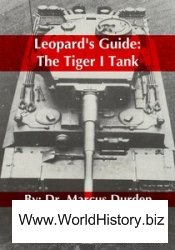The domestication of reindeer marked a considerable departure from previous dependence on wild reindeer (caribou). Although human manipulation of caribou populations is thousands of years old, true domestication of reindeer began no more than 400 to 500 years ago in northern Scandinavia and Siberia (Anderson 1958;Vorren and Manker 1962; Levin and Potapov 1964). O. Magnus (1555) is probably the earliest historical source referring to reindeer domestication by Saami (Lapps). However, there is some archaeological evidence from medieval Scandinavia to suggest that this transition may have taken place as early as the beginning of the fifteenth century (Simonsen 1972;Hambleton and Rowly-Conwy 1997). Historical sources suggest that reindeer domestication began with the expansion of peoples from the south into the territory of these northern peoples, including Norse populations in Scandinavia and Evenks (Tun-gus) in Siberia. These expansions were probably coincident with a climatic optimum in the sixteenth century. The result was removal of reindeer habitat, increased density of northern peoples, and overhunting of reindeer populations, in part resulting from the introduction of firearms. Domestication apparently occurred in order to provide northern groups with a reliable source of food in the face of the decline of reindeer populations. Unlike other northern groups, the Saami regularly milked their reindeer, producing a kind of cheese (Magnus 1555; Utsi 1948). By the seventeenth century, Saami peoples were regularly trading reindeer hides for grain, salt, metal objects, cloth, and alcohol (Schefferus 1674). In part, this trading was to pay for the taxation of reindeer herds imposed by Norse authorities.
Historical sources also indicate that initially the domestication of reindeer (and their herding and use as draft animals) was undertaken as an aid to hunting before it became a sustainable livelihood. Also, in some areas, such as parts of northern Siberia, reindeer herding remained a hunting aid and/or source of reserve food into the twentieth century. Later, more closely supervised and intensive herding took place, beginning no more than 200 years ago. Such herding involved draft reindeer for carrying loads and for riding. As with wild reindeer hunting, domesticated reindeer herding has involved the use of a wide variety of techniques for corralling and killing animals, including, as already mentioned, the use of rifles since the late nineteenth century. At the same time, like cattle herding, it has also involved the use of a wide variety of techniques for breaking animals and for indicating ownership (for example, ear notching).
The necessity for continuous human contact in herding, caring for, and driving reindeer populations created an ever increasing dependence of humans on the animals. This, in turn, necessitated greater reindeer-herding specialization, a more sedentary lifestyle, and, in some cases, a discontinuance of customary transhumant movements into coastal or riverine zones for fishing and/or sea-mammal hunting. The result was the differentiation in Scandinavia between the so-called Mountain Lapps or Reindeer Lapps (focused on reindeer herding), the Forest Lapps, and the Coast Lapps or Fisher Lapps. In Siberia, a similar process can be seen in the evolution of the “Reindeer Chukchi.” Development of discrete groups of herders also took place, with differences in reindeer paraphernalia identifying such groups. Problems have also developed in mating or interaction between domesticated reindeer herds and wild reindeer populations, necessitating special efforts to separate these groups.




 World History
World History









